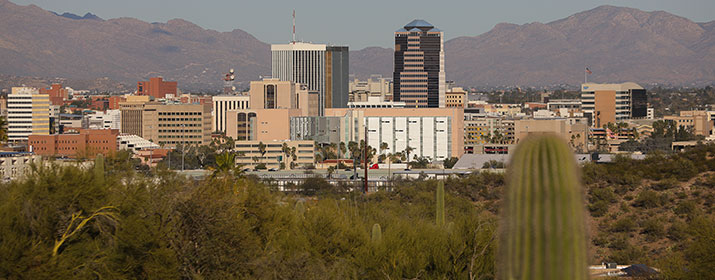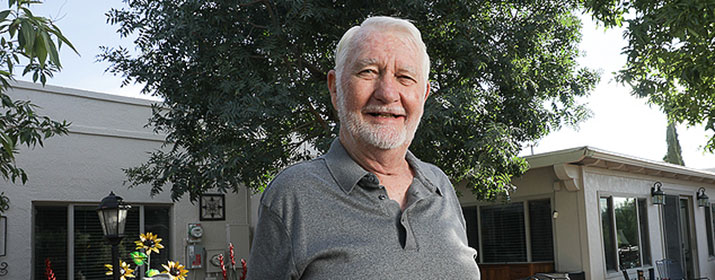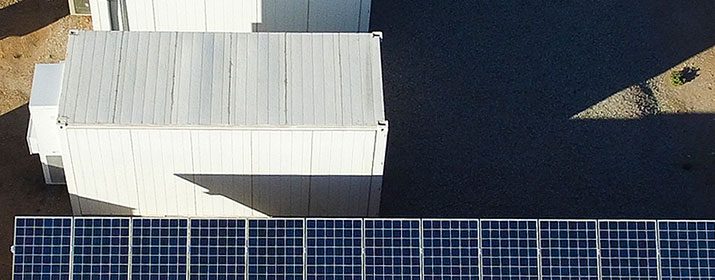
At Tucson Electric Power, we do more than just keep the lights on. We also educate customers about our service and share strategies for saving energy and money.
TEP’s Energy Programs team met with nearly 200,000 community members in 2024 while participating in more than 80 community events, from school science nights to local festivals, resource fairs, and farmer’s markets.
“Educating the community about energy efficiency is a top priority for us,” said Program Manager America Miranda. “We want to give our customers the tools and resources they need to manage their electricity use and costs.”
During these events, TEP representatives fielded a variety of common questions. Here are the answers to some of those:
How are you working to keep your service affordable?
We employ many strategies to help us control the costs reflected in our rates. We conduct competitive requests for proposals for new energy resources and other large purchases to make sure we’re getting the most for our money. We leverage our buying strength to secure cost-effective access to key materials and supplies. We also scrutinize our annual budgets for potential savings and invest in process improvements that support more efficient operations.
Like most businesses, we’ve faced rising costs for materials and other necessities. But we’ve managed to limit the resulting impact on our rates, even as we’ve expanded our system to provide more energy to our growing customer base. Our rates have increased less than 2 percent per year, on average, over the past 23 years. That’s less than the average annual inflation rate over that time, which was 2.5 percent.
Are there ways I can reduce my bills?
Our weather has been hotter than usual lately – in some cases, hotter than ever. The National Weather Service reported that Tucson set a new record in 2024 with 112 days with high temperatures of at least 100 degrees – eclipsing the previous record of 108 triple-digit days in 2020. In 2024, July and September were the hottest ever in the Tucson area, while August was the third hottest and October the fourth hottest on record, the Weather Service reported.
Hot weather results in higher electric bills because air conditioning is the largest driver in residential energy use. Even if your thermostat was set at the same level as the previous summer, your bills were likely higher in 2024 because your AC needs to work longer and harder to maintain the same interior temperature when the weather outside is hotter.
When your AC isn’t operating efficiently, it uses even more electricity – so regular tune-ups are very important. We offer rebates for tune-ups and even for replacements if your air conditioning won’t make it through another summer.
Customers who are sensitive to seasonal bill changes to consider our Budget Billing program. It evens out your bills over the course of a year so you pay the same each month, based on your average annual energy use. It makes managing your household budget a lot easier.
You can also increase your energy efficiency at home by adopting efficient behavior and investing in smart thermostats and other energy efficient devices. We offer checklists, videos and helpful tips.
How does TEP help low-income customers?
TEP provides lower-cost service and other assistance for low-income customers, including:
- monthly bill discounts available through our Lifeline program to customers whose household income does not exceed 200 percent of the federal poverty level
- free weatherization assistance to upgrade their home’s energy efficiency
- partnerships with local agencies to offer emergency bill payment assistance to customers through the federal Low Income Home Energy Assistance Program and the statewide Home Energy Assistance Fund, administered by Wildfire.
We also invite other customers to support those who need assistance by contributing to our HEERO program, either by rounding up their bill payments to the next dollar or by making a specific donation.
How is TEP working toward its aspirational goal of net zero carbon emissions by 2050?
Aspirations don’t mean much without action and we’ve already made some real progress toward that goal. We ended the use of coal in Tucson in 2015, and we’re on track to retire all of our remaining coal-fired units by 2032. We’ve also announced several new local solar and energy storage systems that will be coming online in the next few years. In all, we’ve invested more than $1 billion in renewable energy systems since 2010, including our largest clean energy resource: Oso Grande Wind, which came online in 2021. We don’t have end of year results for 2024 just yet, but our carbon dioxide emissions fell 37 percent between 2019 and 2023. While we’ll continue working to reduce the carbon intensity of our energy, we will also need help from our customers’ smart energy use to achieve that goal, as well as the benefit of new and emerging energy technologies.
Can TEP support economic growth and serve new energy needs without compromising reliability or affordability for current customers?
Tucson is attracting a lot of interest from business investors based on our location, quality-of-life, strong entrepreneurial ecosystem and the University of Arizona, which is a major research university. New investments in reliable energy resources to serve new manufacturers, data centers and other large business operations will also help power this region’s economic growth.
Large customers with stable energy use can subsidize service for residential customers over the long term by making efficient use of the resources developed to serve them, which will likely include hydrogen-ready natural gas-fired generators. These fast, flexible and reliable, 24/7 resources also will support greater integration of wind, solar and storage systems and increased use of electric vehicles.
We’ll remain laser-focused on cost effectiveness and affordability for all our customers as we develop the reliable energy resources we need to power Tucson’s future.
Should I consider a career at TEP?
It’s an incredibly interesting time to work in this industry. TEP and other energy providers are working to maintain affordable energy around the clock while reducing carbon emissions over time. It’s a real challenge that has driven our interest in developing technologies like hydrogen generation, long-term storage, carbon capture and even small modular nuclear reactors. For example, TEP is partnering with the state’s universities and other energy providers in a coalition exploring an Arizona hydrogen hub to help reduce carbon emissions across economic sectors. The new natural gas generating units we plan to build in coming years will be ready to burn hydrogen when that technology matures, since it produces carbon-free energy.
If I want solar for my home or business, can TEP help?
Absolutely. We support our customers’ interest in private solar power systems, which help our community achieve a cleaner energy mix. We also want to help our customers make good decisions about solar. There are a number of factors you should consider when consider your own project, including local building codes, available sunlight, your roof design, whether to lease or own and maintenance and repairs.
TEP’s Solar Analysis tool can help you determine if installing a photovoltaic (PV) array makes sense for you. The tool helps you evaluate all of your solar options to determine if a PV system will meet your financial and sustainable goals. This tool estimates the upfront and long-term costs, potential cost saving and payback period, the recommended size of the system for your home and other factors so that you can make an educated decision.
If it’s not a good fit for you, we also offer an easy way to buy solar power from our large local systems. While all customers receive some solar energy, the TEP GoSolar Shares program provides a flexible way to serve some or all of your energy from the sun for an affordable price.






